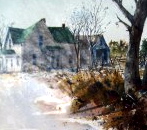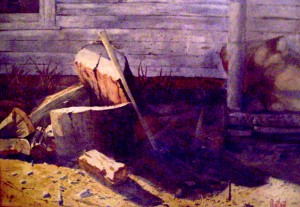
When painting with watercolors, the colors you mix will be determined by the pigments you use. However, the most important ingredient in the mixture is water. Keep in mind, the artist controls the range of any color, from the darkest tone to the lightest of tints, simply by adding water. The whiteness of the paper showing through is the brilliance of watercolor.
Applied to paper, a weak mixture with plenty of water will always allow the color of the paper to show through. A strong mixture of watercolor will never be entirely opaque. However, an artist can create strong colors in their paintings by building them up with two or three colors laid on top of each other. It is important when doing this to allow each layer to completely dry before applying the next layer of color.
Tip#1: Avoid using watercolors in a concentrated mixture with a small amount of water. Pigments will have an unpleasant shiny surface and will not represent a look of watercolor.
Tip#2: The beauty of watercolor is created by overlaid watery washes. The translucency allows the colors to be created on paper rather than mixing on the palette.
Tip#3: cerulean blue, French ultramarine, burnt umber, vermillion, raw umber, and yellow ochre have a tendency to have the pigment to separate when the wash contains plenty of water resulting in an uneven speckled texture. However, this can be very interesting and add entertainment to the painting. Sometimes the unpredictability of watercolors is what makes the finished work beautiful.

